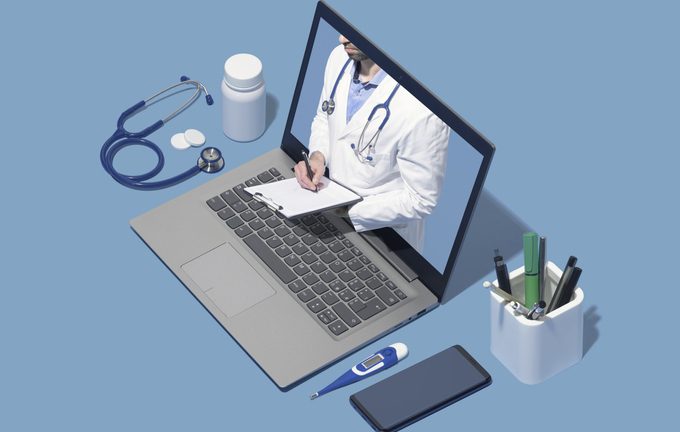Unlocking telehealth benefits hinges on data integration
While telehealth has seen unprecedented growth in the first half of 2020, its continued popularity will depend in part on the availability of expanded remote patient monitoring capabilities. Even though scores of internet-connected health and medical devices have been developed, they frequently haven’t been incorporated into routine clinical care.
“The ability to integrate [remote health data] is really limited,” said Michael Blum, executive director at the Center for Digital Health Innovation at the University of California, San Francisco, in a webinar. Consequently, many physicians have struggled to treat patients remotely as they lack vital sign data that is routine for in-person exams, said Blum, a cardiologist. Despite the availability of devices that can remotely monitor everything from pulse, electrocardiograms, blood pressure, pulse oxygenation and beyond from a patient’s home, many physicians lack the infrastructure to use data from such devices clinically. “The technology out there is fantastic, but the reality is I am [still trying] to figure out how to make those first baby steps in using these devices in the clinic,” Blum said.
While many patients are familiar with such Internet of Things (IoT) technologies, many hospitals struggled to figure out a financial model for them, according to Daniel Elizalde, head of Ericsson’s North American Internet of Things division.
Financial challenges and data hurdles are two reasons that the transition to data-driven patient-centered health care has been relatively slow, according to Bill Betten, president of Betten Systems Solutions. In the patient-centered model, health care decisions and quality measurements are based on an “individual’s specific health needs and desired health outcomes,” as explained in the New England Journal of Medicine. One of the chief barriers for patient-centric care is data silos. But in a patient-centric model, data can be integrated from various sources to enhance patient outcomes. “If I am sick, I want doctors to have access to every relevant piece of information they can get,” Betten said.
Another hurdle in the U.S. has been the lack of reimbursement for telehealth and remote patient monitoring, said Carrie Nixon, managing partner of the Nixon Law Group. Before the COVID-19 outbreak, federal law required patients to be in rural or underserved areas to be eligible for telehealth. “Once we’re out of the public health emergency, we could go right back to where we were with basically no reimbursement for telehealth,” Nixon said.
The possibility that reimbursement for telehealth could fall in the future has had a chilling effect for some health care providers. “Some smaller and less progressive practices in the U.S. are still not willing to fully implement a telehealth program when they’re just not sure whether reimbursement will be sustained in the long term,” Nixon said.
To read the complete article, visit IoT World Today.
















